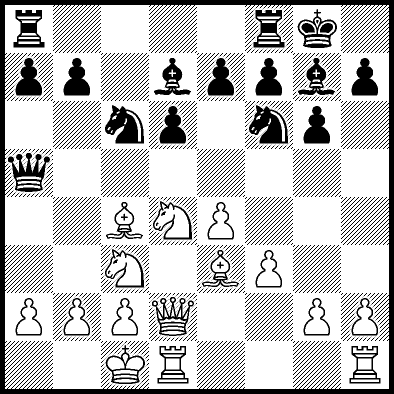
The Sicilian Defence, and an aggressive one at that. Symmetric openings such as 1. e4 e5 or 1. d4 d5 can become blocked, but in the Sicilian Black has broken the symmetry at the first move, and lays down the challenge to White to take the initiative before Black can!
The main idea for White is to play d4 and occupy the centre with pieces. The main idea for Black is to play d5; this will almost always ensure at least equality if it can be safely played.
2. Nf3 d6
The first sign that the game is heading towards a Sicilian Dragon. In the Accelerated Dragon Black avoids d6 and aims for an early d5. It's hairier than the regular Dragon: Black must be wary of White playing e5 and chasing away the f6 knight. d6 is a slower but safer move that prevents this.
3. d4 cxd4
4. Nxd4
White has now achieved his main objective, and hopes that superior development will lead to a successful attack.
4. ... Nf6
5. Nc3 g6
The game has now reached the Sicilian Dragon, with Black poised to fianchetto his King bishop and dominate the a1-h8 diagonal. Since this is the hallmark of the opening, Black's King bishop is often called a Dragon bishop.
6. Be3
Can't Black play 6. ... Ng4 now, either exchanging White's dark squared bishop and leaving his Dragon bishop unopposed, or else forcing White to waste time moving the bishop again? No, because 7. Bb5+ would win the knight.
6. ... Bg7
7. f3
White sets up his pieces for a Yugoslav attack: the pawn at f3 overprotects e4 and prepares g4.
7. ... 0-0
8. Qd2 Nc6
9. Bc4 Bd7
10. 0-0-0 Qa5

A typical position. White and Black are both set up for inflicting carnage on the opponent.
A Loginov (2348) - A Motylev (2532)
Chigorin memorial tournament, St Petersburg, 2 November 1999
1.e4 c5 2.Nf3 d6 3.d4 cxd4 4.Nxd4 Nf6 5.Nc3 g6 6.Be3 Bg7 7.f3 0-0 8.Qd2 Nc6 9.Bc4 Bd7 10.0-0-0 Qa5 11.g4 Rfc8 12.Bb3 Ne5 13.h4 Nc4 14.Qe1 Nxe3 15.Qxe3 Rc5 16.h5 Rac8 17.hxg6 hxg6 18.Nf5 gxf5 19.gxf5 Rxc3 20.bxc3 Rxc3 21.Qd2 Qa3+ 22.Kb1 Rxf3 23.Rhg1 Ng4 24.f6 Bxf6 25.e5 Bxe5 26.c3 Bxc3 0-1
Note: the typical sacrifice of a Black rook on c3.
And here's another Dragon game, with quite a different result:
L Barczay - L Kavalek
Salgotarjan Salgotarjan, 1967
1.e4 c5 2.Nf3 d6 3.d4 cxd4 4.Nxd4 Nf6 5.Nc3 g6 6.Be3 Bg7 7.f3 Nc6 8.Qd2 0-0 9.Bc4 Bd7 10.Bb3 Qa5 11.g4 Rfc8 12.0-0-0 Ne5 13.h4 Nc4 14.Qd3 Nxe3 15.Qxe3 Qc5 16.h5 e5 17.hxg6 hxg6 18.Nf5 gxf5 19.Qg5 Qf2 20.Rh6 Nxg4 21.Bxf7+ Kxf7 22.Qg6+ Kf8 23.Rh7 Bh6+ 24.Kb1 Be8 25.Rh8+ Ke7 26.Qh7+ Bf7 27.Nd5+ Kd7 28.Qxf7+ Kc6 29.Ne7+ Kb6 30.Rxc8 Qxf3 31.Rxd6+ Ka5 32.Qd5+ b5 33.Nc6+ 1-0
Note: how White's light-squared bishop was instrumental in the attack, and the typical sacrifice of a White knight on f5.